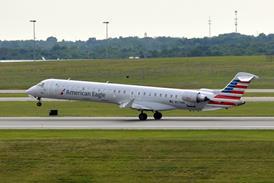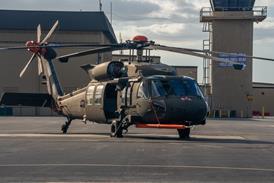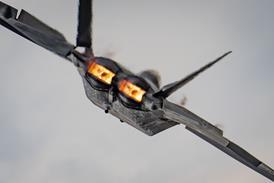REPORT BY KEVIN O'TOOLE IN SINGAPORE
The Star Alliance has had to mature quickly over the past six months, working to sharpen up decision making and prove its worth to its partners
Airline global alliances were born and raised during the boom of the past five years. Now they are having to prove that they can make their way in the world during the bad times as well as the good, says Jaan Albrecht, chief executive of Star Alliance. For its part, Star has been doing some hard thinking about its structure and the need for sharper, swifter decision-making.
At nearly five years old, Star was arguably ready for the move towards a more mature management structure, but the need to respond to 11 September has helped "trigger" change, says Albrecht. Management by committee is gone. In its place comes a more flexible approach to project management.
While the idea of governing by consensus may have worked for the five original members, Albrecht concedes that it risked becoming unmanageable with 15 carriers. Frustrations were indeed starting to be voiced. "In the past, the idea was to get all carriers on board for every initiative," says Albrecht, whereas today, there is the flexibility to base projects around a smaller core of airlines. For example, if five carriers wanted to sign up a franchise deal for a soft drinks brand, the Star team "would jump on board" and help push the project forward without waiting for all to join. "We need to be much quicker on to the market after 11 September," adds Albrecht.
This switch of emphasis has been reinforced by some background changes to the governance rules by which carriers oversee the alliance. Although Albrecht carefully declines to give details, he notes that the change has "clarified a situation that was already evolving".
The alliance team that Albrecht came to head a year ago, has, in fact, been a standalone unit for the past three years and today employs 65 full-time staff. However, over the past six months Albrecht has led a reorganisation to tighten the unit's focus. At the end of last year, the Los Angeles centre was closed and its world headquarters brought to Frankfurt. Since the start of 2002, the unit has been established as a registered German company, Star Alliance Services GmbH, with each of the airline partners holding a single share.
Airline chief executives continue to meet twice a year to set the alliance's broad strategic goals and agree Star's annual business plan. At the next tier, an alliance management board sits five times a year with a more detailed supervisory role. The key project work, however, is driven within the Star executive by three core business units covering: products & services; commercial; loyalty & marketing. These provide the members with a "sounding board" for ideas and a focus for delivering specific projects and standards. "Our job is to be the glue behind the airlines' individual efforts," says Albrecht.
Organisational changes
He acknowledges that such organisational changes were a necessity if Star hoped to add new members, while also keeping "the working processes at a manageable level". Today there is no longer a limit on growth, he adds. "I think when the Star Alliance started the idea was to keep it simple, but five years later, we're in a unique position in that we have the internal structure and governance which allows us to grow."
The opportunities presented by market upheavals have not been lost on Star. Albrecht confirms that talks are taking place with "several carriers" following the collapse of Swissair and its European Qualiflyer grouping. LOT Polish Airlines looks the prime target.
Albrecht also points to other gaps in the Star system. China remains high on the agenda, where he notes that Air China has its fullest relationship with Star carriers. Star is also "having a close look" at the growing Indian market as an "area of opportunity".
The aftermath of 11 September has also presented Star with some hard budget choices over where to concentrate scarce resources. Albrecht concedes that a sift through a mass of potential projects was perhaps overdue, separating out the essential from the merely nice to have. It is hardly surprising that the current emphasis has been on those projects that offer to save costs or help promote sales, or preferably both. Ground services have provided a good starting point.
At the end of last year, the alliance announced plans to track down opportunities to replace multiple third-party handling contracts with single Star deals to save over $60 million a year. And, to save another $24 million, it is looking to help members save on lounges that they do not own, at least where there is the chance to share with others.
Given that the alliance has 600 lounges, there is mileage left in streamlining lounges. Bangkok had 13 separate lounges, now reduced to seven. The alliance saw its first joint lounge open in exclusive Star colours in August at Zurich, an airport recently opened to competition by the collapse of Swissair.
The bigger goal is to locate all Star members under one roof at airports, not only to share costs, but also to lay the groundwork for the connectivity which the business traveller wants from the alliance. Carriers are already together at a majority of the member's home hubs: Frankfurt, Munich, Copenhagen, Stockholm, Vienna, Rio de Janeiro and San Francisco. This is also true at Buenos Aires, Barcelona, Beijing, Shanghai, Seoul and Shanghai. More are on the way.
The goal of a base at Paris Charles de Gaulle has moved a step nearer with the signing of an agreement with Aeroports de Paris, which should allow Star airlines to come together in the old Terminal 1 when it emerges from major refurbishment in 2005. That would indeed mark a coup for Star, effectively creating a mini-hub on the doorstep of its key French competitor, complete with check-in desks, lounges, baggage handling and offices dedicated to the alliance.
Air Canada and Austrian Airlines are currently in Terminal 2 and will "determine their position" nearer the time, but all the other members have signed up to the project, says Star.
In order to win agreement from the airport operator, Star has had to guarantee that it will bring significant traffic growth to the airport in order to make maximum use of the terminal space. The Star carriers accounted for around 5.5 million of the airport's more than 48 million passengers in 2000, but that is due to rise to 7.5 million by 2005.
Paris is not alone. In mid-January the alliance broke ground on a dedicated concourse at Miami International Airport, which is also due to open in 2005. United Airlines had been reining back its presence at the airport, which is dominated by rival American Airlines. However, with Varig and Mexicana able to feed the airport from the South, together with Air Canada and Lufthansa, Albrecht argues that the alliance can together become a "force to be reckoned with" in Miami.
Terminal plans
Among other major targets for the alliance is London Heathrow, where bmi british midland has made Star a clear second player behind British Airways, but where it is split between two terminals. If and when BA moves to a new Terminal 5 within the next five years, the Star aim is to create its own centre. "We've already had some designers look at what a Star Terminal 3 could look like at Heathrow," says Kristian Kirchheiner, vice-president for products and services.
Star carriers are also planning to come together at Tokyo's Narita within the next couple of years. Led by United and ANA the alliance holds more than half of Narita's slots at the airport. Elsewhere in Asia, the alliance should have options in Bangkok when the new airport opens after 2005.
The overall concept, says Kirchheiner, is to carry the Star concept through from check-in to arrival, although the alliance is careful to skip the more contentious issue of harmonising the flight product. "In-flight is not really what Star does," he says, stressing the retention of "local service" on board.
Star also hopes to steal a march on the competition by allowing frontline staff to access and change bookings from partners across the alliance. Behind the project lies the StarNet IT solution first launched in 2000. It acts as a common network to which members can hook in their own computer systems. Star is now in the process of using that functionality to allow for passenger records (PNRs) to be swapped between partners. What is more, says Kirchheiner, agents will be able to access bookings using their own familiar screen and language.
The flexibility should shortly cover check-ins at partner counters and even common customer complaints. Such initiatives may have slipped a little in the current climate, but Star seems confident that it will '-emerge from recession with a headstart in the alliance race.
Source: Airline Business























